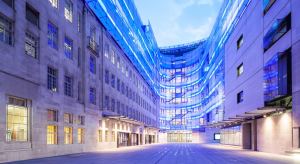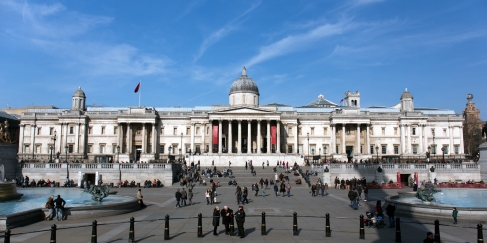Broadcasting House is the headquarters and registered office of the BBC, located in Portland Place and Langham Place, London. The first radio broadcast from the building was made on 15 March 1932, and the building was officially opened two months later, on 15 May. The main building was built in the Art Deco style, and features a facing o of Portland stone over a steel frame. It is Grade 2* listed building and includes the BBC Radio Theatre, from where music and speech programmes are recorded in front of a studio audience, and lobby which has been used as a location for filming of the 1998 BBC television series In the Red.
As part of a major consolidation of the BBC’s property portfolio in London, Broadcasting House has been extensively renovated and extended. This involved the demolition of post-war extensions on the eastern side of the building, which were replaced by a new wing completed in 2005. The wing was named the “John Peel Wing” in 2012, after the disc jockey. BBC Radio 1, BBC Radio 1 Xtra and BBC London moved from other locations in London to the new wing.BBC Arabic Television and BBC Persian Television were established after the wing was built and broadcast from there.
The main building was refurbished, and a new extension built to the rear of it. The radio stations BBC Radio 3, BBC Radio 4,BBC Radio 4 Extra and the BBC world Service all transferred to newly refurbished studios within the building. The new extension links the old building with the John Peel Wing, and includes a new combined newsroom for BBC News, featuring studios for the BBC News Channel , BBC World News and other news programming. All news operations moved from BBC Television Centre in March 2013.
The official name of the building remains Broadcasting House but the BBC now also uses the term new Broadcasting House (with a small ‘n’) in its publicity which refers to the new extension rather than the whole building, with the old part of Broadcasting House known as old Broadcasting House.
